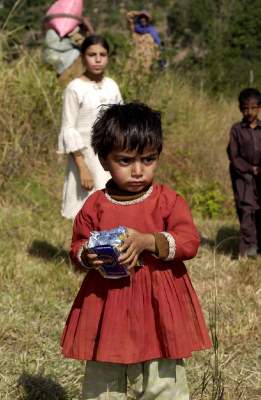The 2008 World Balance Sheet is out: the MDG progress report

The UN Development Program published their 2008 progress report on the Millennium Development Goals (MDG).
The MDGs are part of the historic promise 189 world leaders made at the United Nations Millennium Summit in 2000 when they signed onto the Millennium Declaration and agreed to meet an eight-point road map or MDGs with measurable targets and clear deadlines for improving the lives of the world’s poorest people by 2015.
How well did we do in 2008? A snapshot (Source: UNDP's progress report)
Goal 1: Eradicate extreme poverty & hunger
The goal of cutting in half the proportion of people in the developing world living on less than $1 a day by 2015 remains within reach. However, this achievement will be due largely to extraordinary economic success in most of Asia.
In contrast, little progress was made in reducing extreme poverty in sub-Saharan Africa. In Western Asia, poverty rates were relatively low but increasing.
Goal 2: Achieve universal primary education
In sub-Saharan Africa the net enrolment ratio has only recently reached 71 per cent. Around 38 million children of primary school age in this region are still out of school. In Southern Asia, the enrolment ratio has climbed to 90 per cent, yet more than 18 million children of primary school age are not enrolled.
Goal 3: Promote gender equality & empower women
As part of its success in raising the total primary enrolment rate, Southern Asia has made the most progress in gender parity since 2000.
In Western and Central Africa, where high repetition and low retention rates are common, girls in particular fail to enrol in and stay in school. Drought, food shortages, armed conflict, poverty, lack of birth registration, child labour, and HIV and AIDS contribute to low school enrolment and high dropout rates for both boys and girls in those subregions, but prove to be especially devastating for girls.
Goal 4: Reduce child mortality
In 2006, for the first time since mortality data have been gathered, annual deaths among children under five dipped below 10 million. Nevertheless, the death of millions of children from preventable causes each year is unacceptable. A child born in a developing country is over 13 times more likely to die within the first five years of life than a child born in an industrialized country.
Sub-Saharan Africa accounts for about half the deaths of children under five in the developing world. Between 1990 and 2006, about 27 countries – the large majority in sub-Saharan Africa – made no progress in reducing childhood deaths. In Eastern Asia and Latin America and the Caribbean, child mortality rates are approximately four times higher than in developed regions.
Goal 5: Improve maternal health
Maternal mortality remains unacceptably high across much of the developing world. In sub-Saharan Africa, a woman’s risk of dying from treatable or preventable complications of pregnancy and childbirth over the course of her lifetime is 1 in 22, compared to 1 in 7,300 in the developed regions.
Goal 6: Combat HIV/AIDS, malaria & other diseases
Every day, nearly 7,500 people become infected with HIV and 5,500 die from AIDS, mostly due to a lack of HIV prevention and treatment services. However, largely because newly infected people survive longer, the number of people living with HIV rose from an estimated 29.5 million in 2001 to 33 million in 2007. The vast majority of those living with HIV are in sub-Saharan Africa.
Goal 7: Ensure environmental sustainability
Carbon dioxide emissions reached 28 billion metric tons in 2005 and continued upward, resulting in increased atmospheric concentrations of CO2. Emissions per unit of economic output fell by more than 20 per cent in the developed regions, while they increased by 35 per cent in South-Eastern Asia and by 25 per cent in Northern Africa.
While no area can escape the adverse impact of climate change, the Arctic, small islands, mega deltas in Asia and Africa, and the African region overall seem to be especially vulnerable because of their high exposure to the effects of climate change, their populations' limited capacity to adapt to the consequences, or both.
Goal 8: Develop a global partnership for development
At current exchange rates, official development assistance (ODA) continued to drop from an all time high of $107.1 billion in 2005, to $104.4 billion in 2006 and $103.7 billion in 2007. This is mainly the result of a decline in debt relief grants. Adjusting for changes in prices and exchange rates, aid disbursements fell by 8.4 per cent in 2007 compared to 2006.
Check the full 2008 MDG progress report
Picture courtesy Rein Skullerud (WFP)
 Peter. Flemish, European, aid worker, expeditioner, sailor, traveller, husband, father, friend, nutcase. Not necessarily in that order.
Peter. Flemish, European, aid worker, expeditioner, sailor, traveller, husband, father, friend, nutcase. Not necessarily in that order.
1 comments:
this is super........ god bless you........
Post a Comment